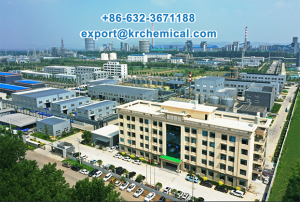Polyepoxysuccinic acid (PESA) is a type of organic polymer that is commonly used in water treatment as a scale inhibitor, dispersant, and corrosion inhibitor. It is often utilized in industrial applications, such as in cooling water systems, boilers, and other closed-loop water systems. The physical properties of PESA can vary slightly depending on its specific formulation and molecular weight, but here are some general characteristics:
Physical Properties of Polyepoxysuccinic Acid (PESA):
- Molecular Formula:
- The general molecular formula for polyepoxysuccinic acid is C₄H₆O₄. It can be represented as a polymer with repeating epoxysuccinic acid units, where the polymer structure can vary depending on the degree of polymerization.
- Appearance:
- PESA typically appears as a colorless to pale yellow liquid or a solid powder depending on the formulation and concentration.
- The liquid form is often water-soluble, while solid forms are more commonly used in powdered form for ease of storage and handling.
- Molecular Weight:
- The molecular weight of PESA can vary depending on the polymer’s degree of polymerization. Typically, it ranges from 1,000 to 5,000 g/mol or higher. Higher molecular weight PESA generally exhibits stronger dispersing and scale inhibition properties.
- Solubility:
- Water Solubility: PESA is highly soluble in water due to the presence of carboxyl groups (-COOH) and other hydrophilic sites. It is often used as an aqueous solution in various applications.
- It can also dissolve in polar organic solvents, but its solubility is usually optimized in water-based formulations.
- pH:
- The pH of PESA solutions is typically acidic, ranging from 4 to 5 in its aqueous form, but this can vary depending on the concentration and specific formulation.
- In concentrated form, PESA may be slightly acidic, but it is less acidic than other common acid-based scale inhibitors (e.g., phosphonates).
- Density:
- The density of polyepoxysuccinic acid varies based on the concentration and molecular weight. For aqueous solutions, the density is typically around 1.0 to 1.2 g/cm³.
- Viscosity:
- PESA is generally low-viscosity when dissolved in water. Its viscosity will increase with concentration and molecular weight, particularly in higher concentrations where it may act as a thickening agent or dispersant.
- Thermal Stability:
- PESA exhibits good thermal stability, with its decomposition temperature generally being above 200°C. However, as a polymer, its stability can vary depending on the degree of polymerization and the presence of other additives in the formulation.
- Toxicity:
- Polyepoxysuccinic acid is generally regarded as low in toxicity. It is considered safer for use in industrial applications, particularly in water treatment, compared to other chemicals like phosphonates or organophosphates.
- It is biodegradable, making it an environmentally friendly option for water treatment processes compared to more persistent chemicals.
- Corrosion Inhibition:
- As a corrosion inhibitor, PESA prevents scale formation and corrosion in water systems by forming a protective layer on metal surfaces. It can also disperse mineral scales like calcium carbonate, calcium sulfate, and other salts, preventing the formation of deposits.
Applications in Water Treatment:
- PESA is primarily used as an anti-scaling agent and corrosion inhibitor in water systems such as:
- Cooling towers
- Boiler water treatment
- Reverse osmosis (RO) systems
- Oilfield water treatment
- Industrial water systems
Summary of Key Physical Properties of PESA:
| Property | Description |
|---|---|
| Appearance | Colorless to pale yellow liquid or powder |
| Molecular Formula | C₄H₆O₄ |
| Molecular Weight | Typically 1,000 to 5,000 g/mol |
| Water Solubility | Highly soluble in water |
| pH | Acidic, typically 4 to 5 in aqueous solution |
| Density | 1.0 to 1.2 g/cm³ (aqueous solution) |
| Viscosity | Low viscosity in water-based solutions |
| Thermal Stability | Stable up to ~200°C |
| Toxicity | Low toxicity, biodegradable |
PESA is considered an environmentally friendly alternative to traditional water treatment chemicals, offering effective scale inhibition and corrosion control with minimal environmental impact.

